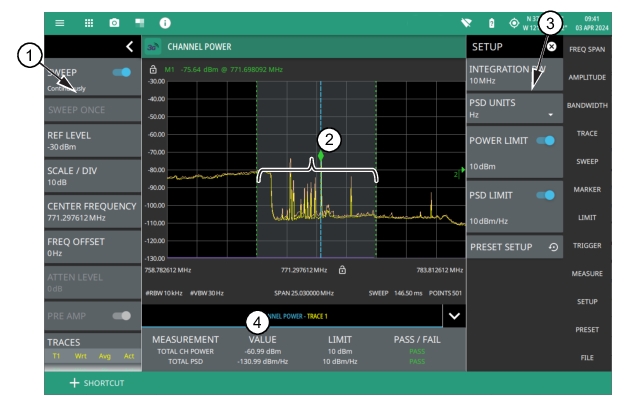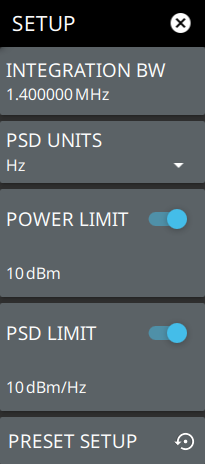 |
1. WCDMA Analyzer Status Panel: Each measurement features a unique status panel that displays settings and information relevant to the current measurement and view settings. This panel provides quick access to the MIMO antenna selection and status, sweep setting, and frequency and bandwidth configuration. See STATUS PANEL (Channel Power). 2. Channel Power: Channel power is integrated over the shaded region where the dashed green lines indicate the upper and lower frequency thresholds. 3. SETUP Menu: The channel power settings are configured in the SETUP menu. See SETUP Menu (Channel Power). 4. Channel Power Summary: This area shows the channel power measurement summary data and pass/fail test results, when enabled: • The total channel power value and the test limit are expressed in dBm with a pass/fail result. • The total PSD limit is expressed in dBm with a pass/fail result. • Tapping this summary area opens the setup menu.. |

